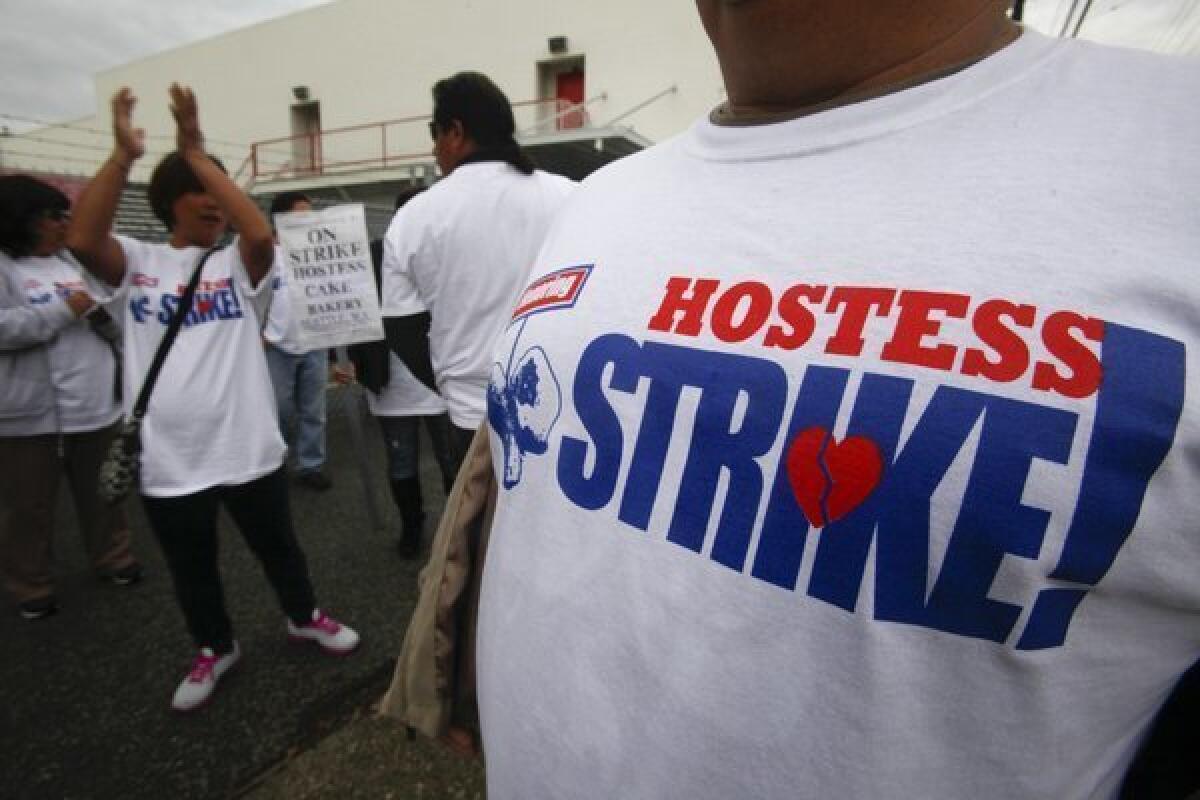Poor management, not union intransigence, killed Hostess

Let’s get a few things clear. Hostess didn’t fail for any of the reasons you’ve been fed. It didn’t fail because Americans demanded more healthful food than its Twinkies and Ho-Hos snack cakes. It didn’t fail because its unions wanted it to die.
It failed because the people that ran it had no idea what they were doing. Every other excuse is just an attempt by the guilty to blame someone else.
Take the notion that Hostess was out of step with America’s healthful-food craze. You’d almost think that Hostess failed because it didn’t convert its product line into one based on green vegetables. Yet you only have to amble down the cookie aisle at your supermarket or stroll past the Cinnabon kiosk at the airport to know that there are still handsome profits to be made from the sale of highly refined sugary garbage.
It’s true that the company had done almost nothing in the last 10 years to modernize or expand its offerings. But as any of the millions of Americans who have succumbed to Twinkie cravings can attest, there has always been something about their greasy denseness and peculiar aftertaste that place them high among the ranks of foodstuffs that can be perfectly satisfying without actually being any good.
Hostess management’s efforts to blame union intransigence for the company’s collapse persisted right through to the Thanksgiving eve press release announcing Hostess’ liquidation, when it cited a nationwide strike by bakery workers that “crippled its operations.”
That overlooks the years of union givebacks and management bad faith. Example: Just before declaring bankruptcy for the second time in eight years Jan. 11, Hostess trebled the compensation of then-Chief Executive Brian Driscoll and raised other executives’ pay up to twofold. At the same time, the company was demanding lower wages from workers and stiffing employee pension funds of $8 million a month in payment obligations.
Hostess management hasn’t been able entirely to erase the paper trail pointing to its own derelictions. Consider a 163-page affidavit filed as part of the second bankruptcy petition.
There Driscoll outlined a “Turnaround Plan” to get the firm back on its feet. The steps included closing outmoded plants and improving the efficiency of those that remain; upgrading the company’s “aging vehicle fleet” and merging its distribution warehouses for efficiency; installing software at the warehouses to allow it to track inventory; and closing unprofitable retail stores. It also proposed to restore its advertising budget and establish an R&D; program to develop new products to “maintain existing customers and attract new ones.”
None of these steps, Driscoll attested, required consultation with the unions. That raises the following question: You mean to tell me that as of January 2012, Hostess still hadn’t gotten around to any of this?
The company had known for a decade or more that its market was changing, but had done nothing to modernize its product line or distribution system. Its trucks were breaking down. It was keeping unprofitable stores open and having trouble figuring out how to move inventory to customers and when. It had cut back advertising and marketing to the point where it was barely communicating with customers. It had gotten hundreds of millions of dollars in concessions from its unions, and spent none of it on these essential improvements.
The true recent history of Hostess can be excavated from piles of public filings from its two bankruptcy cases. To start with, the company has had six CEOs in the last 10 years, which is not exactly a precondition for consistent and effective corporate strategizing.
The most recent and presumably final incumbent, Gregory Rayburn, had been with the company all of nine days before taking over in March when Driscoll, who earlier had been described in court papers as “key to … the future well-being” of the company, departed suddenly and without explanation.
Hostess first entered bankruptcy in 2004, when it was known as Interstate Bakeries. During its five years in Chapter 11, the firm obtained concessions from its unions worth $110 million a year. The unions accepted layoffs that brought the workforce down to about 19,000 from more than 30,000. There were cuts in wages, pension and health benefits. The Teamsters committed to negotiations over changes in antiquated work rules. The givebacks helped reduce Hostess’ labor costs to the point where they were roughly equal to or even lower than some of its major competitors’.
But the firm emerged from bankruptcy with more debt than when it went in — in with $575 million, out with $774 million, all secured by company assets. That’s pretty much the opposite of what’s supposed to happen in bankruptcy. By the end, there was barely a spare distributor cap in the motor pool that wasn’t mortgaged to the private equity firms and hedge funds holding the notes (and also appointing management).
As management experts such as Peter Drucker have observed, the goal of a successful business must be to find and serve customers. Do that, and the numbers take care of themselves. The Hostess approach was entirely backward — meeting the numbers became Job One, and figuring out how to grow the business became Job None.
The post-bankruptcy leadership never executed a growth strategy. It failed to introduce a significant new product or acquire a single new brand. It lagged on bakery automation and product R&D;, while rivals such as Bimbo Bakeries USA built research facilities and hired food scientists to keep their product lines fresh. At the time of the 2004 bankruptcy, Hostess was three times the size of Bimbo. Today it’s less than half Bimbo’s size. (Bimbo, which has been acquiring bakeries such as Sara Lee and Entenmann’s right and left, might well end up with Hostess’ brands.)
Hostess contended its biggest burden came from the multi-employer pension plans covering its unionized employees. Its contention is that these plans are designed so that when any employer goes out of business or otherwise withdraws, its obligations to its former workers are inherited by the companies that remain.
Consequently, Hostess says, a large portion of its required pension contributions benefit employees of other long-departed firms. This claim has been swallowed whole by Hostess’ mourners, but it’s fishy.
For one thing, many Hostess competitors contribute to similar plans, some at an even higher rate than Hostess. For another, the real problem is that for years the employers allowed the pension plan to become underfunded, either by skipping required contributions while they were in business or raiding the fund to pocket supposedly excess assets that proved to be not so excess. Hostess is guilty of the same practice.
In any event, the $989 million in pension liabilities Hostess ended up owing various union funds, according to its bankruptcy filing, didn’t accumulate in secret, like termite damage. It accrued because Hostess and its sister bakeries judged their retirement obligations to be relatively unimportant in the grand scheme of things. Now that the bill has come due, Hostess blames the workers for demanding what they were promised.
The record shows that Hostess’ unions were willing to talk with management at virtually every stage to keep the firm alive. There are plenty of companies and industries in which such talks have been fruitful, including the auto industry. But they can succeed only when everyone is confident that the guys at the other side of the table are committed to the same goals.
In this case, the unions finally realized that the Hostess strategic plan started and ended with extracting yet another round of cutbacks from employees. To argue that capitulating might at least save thousands of jobs is to accept the corrosive mind-set that manufacturing workers should be glad they’ve got any job at all and take what they’re offered.
The union members could see that their supposed management “partners” hoped to rescue their own investments by placing workers on a glide path to life on a minimum-wage existence, without pensions and without healthcare, after they had given and given again. You want to claim that they should have accepted the latest management demands as better than nothing instead of voting it down, OK. But you should ask yourself two questions: Where do you think this trend would have ended, and how much would you take?
Michael Hiltzik’s column appears Sundays and Wednesdays. Reach him at mhiltzik@latimes.com, read past columns at latimes.com/hiltzik, check out facebook.com/hiltzik and follow @latimeshiltzik on Twitter.
More to Read
Inside the business of entertainment
The Wide Shot brings you news, analysis and insights on everything from streaming wars to production — and what it all means for the future.
You may occasionally receive promotional content from the Los Angeles Times.











